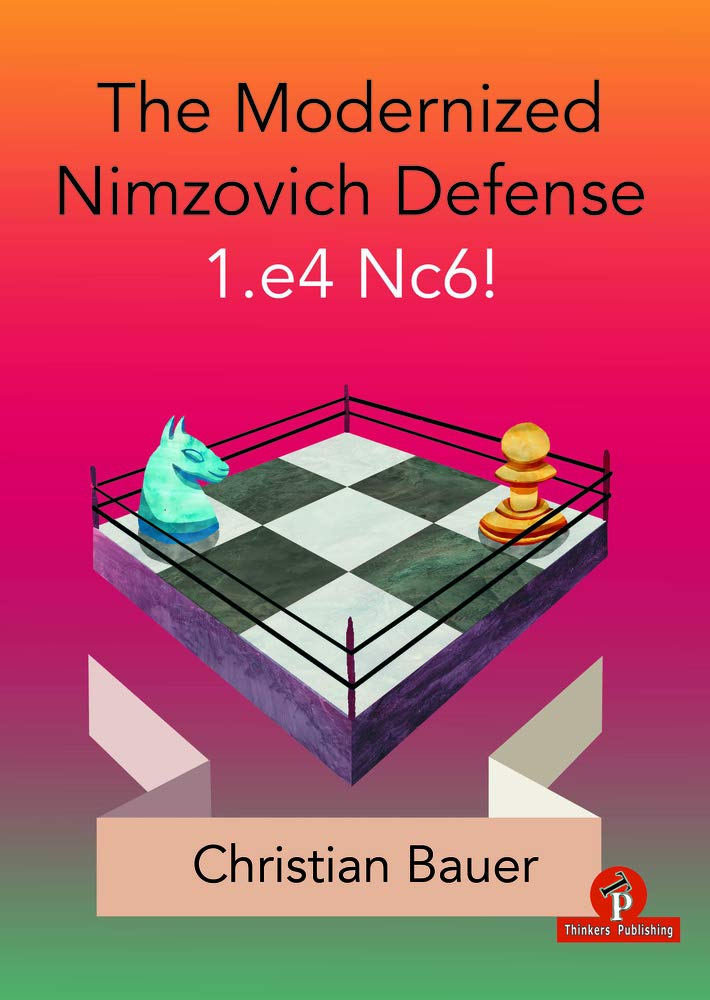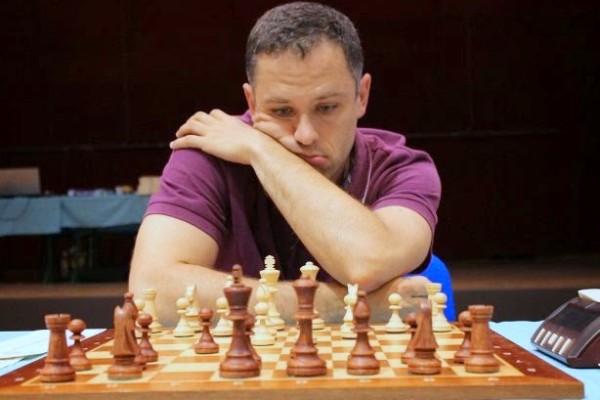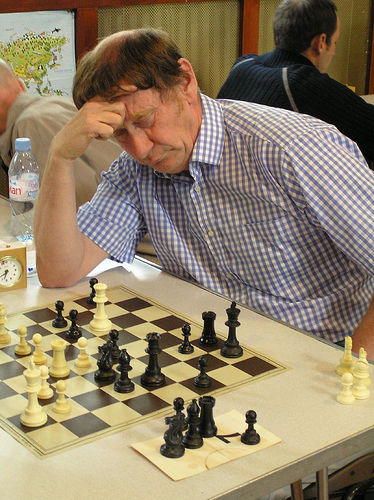
“French Grandmaster Christian Bauer is one of his country’s leading players. He is a former national champion and has represented France in numerous international team events. He has written many articles and books for several publishing houses: ‘Play 1…b6’ and ‘The Philidor Files’ for Everyman Chess and ‘Play the Scandinavian’ for Quality Chess. Many of his books have been translated into other languages. This is his fourth book and his second book for Thinkers Publishing after his master piece ‘Move Candidates’.”

From the publisher via Amazon we have this blurb:
“There is no doubt that the Nimzowitsch Defence is one of Black’s most inspiring openings after 1.e4. Black strives to unbalance the position by creating new problems for White from move two, giving himself every opportunity to fight for the initiative from the outset. It is no surprise that 1…Nc6 appeals to ambitious players who relish a complicated battle.
In this book, GM Christian Bauer explains how to use this powerful weapon drawing from his own successful experiences. He is not shy to show you the fundamental ideas, the traps, the pitfalls and naturally the move order subtleties which play such an important role in our modern game of chess. We are convinced this book will give you plenty of confidence and make your opponent think more than twice.”
End of blurb…
Christian Bauer is a strong French Grandmaster with a current FIDE rating of 2639 and has won the French Championship three times and has already authored several books. Previously we reviewed Candidate Moves : A Grandmaster’s Method.
In this 2020 book he takes a look at the rarely played but respectable Nimzowitsch Defence (1…Nc6, B00) as a reply to 1.e4.
For those who do not want to retain large quantities of opening theory this move seems to be attractive choice and will set most White players thinking at a very early stage and therefore be a wise ploy for shorter time control games.
Bauer’s first Megabase 2020 recorded outing for 1…Nc6 was in 1992 in the World Under-16 Championship and since then he has played it seventy-six times. His score with it is a mightily impressive 63.5% so we can be confident that he knows what he is writing about.
The earliest game recorded in Megabase 2020 was from an 1846 Bristol Chess Club encounter between John Withers and Elijah Williams which black won.
In Chapter 1 the author examines unusual moves such as 2.f4 and 2. Bb5. 2.f4 is a move that King’s Gambit players might like to try but 2…d5 is a strong reply leaving black with easy equality from the outset. 2.Bb5 is also given but either 2…Nf6 or 2…d5 are replies often played by black and are both good. In many of these lines black fianchettos his dark squared bishop. In general, the author often gives more than one line for black.
Chapter 2 gives 2.Nc3 the move possibly preferred by lovers of the Vienna Game. This is the 3rd most commonly played move by White and Black may well consider 2…e5 having avoided the Ruy Lopez.
Recommended for Black is 2…Nf6 3.d4 and 3…d5 is deeply analysed however black can instead try 3…e5 transposing into a Four Knights Game.
One of the attractions of 1…Nc6 is that black can often go into open game (1.e4 e5) lines where he has avoided the Ruy Lopez.
The next part of the book moves on to the substantially more critical 2.d4 when black has two credible responses. The first is the thematic 2…e5 allowing White to answer with 3.Nf3 transposing into a Scotch Game. Black will therefore need to know the theory to that opening also.
More in line with achieving original Nimzowitsch style positions is 2…d5 which most engines give as the best move. Obviously, the assessment of an engine at move two can be taken with a large pinch of salt.
In my opinion if White replies 3.e5 the 3…Bf5 gives black an easy game.
3.e4xd5 leads to Centre Counter type positions but White’s d-pawn can come under early attack as black intends to castle queenside.
The most popular move is 3.Nc3 when the main line is 3…d5xe4 4.d5 when the Breyer-like 4…Nb8 planning c6 or e6 is recommended.
Christian also looks at 3…Nf6 when the main line is 4.e5 Nd7. The fact that White has played fifteen(!) different moves here shows that is it not clear what the “best” move is.
THE most popular reply to 1…Nc6 is by far 2.Nf3 when the Nimzowitsch move is 2…d6. Black often plays g6 and Bg7 in these lines with similar play to the Pirc Defence but having ruled out the dangerous Austrian attack option. Black can also try …Bg4 lines and these are also looked at in some detail. White can try c3 or Nc3 lines and must decide putting the light squared bishop on either e2 or b5.
In summary, if you are bored with opponents who hit you with loads of theory this may be the opening just for you and, reassuringly, it appears to be quite sound.
Finally, here is one of the author’s game with this defence:
Colin Lyne, Farnborough, Hampshire, 16th July, 2021

Book Details :
- Paperback : 264 pages
- Publisher: Thinkers Publishing; 1st edition (19 Nov. 2020)
- Language: English
- ISBN-10: 9492510960
- ISBN-13: 978-9492510969
- Product Dimensions: 17.15 x 1.27 x 22.86 cm
Official web site of Thinkers Publishing


Hello, I have playing 1…Nc6 for a long time and it sometimes go like this. 1,d4 Nc6 2.d5 Nb8 3.e4 and so on. I look to playing my Night out to Nh6 and back to f7 which gives me a good attacking chance. Do you have anything like that in your book? mike